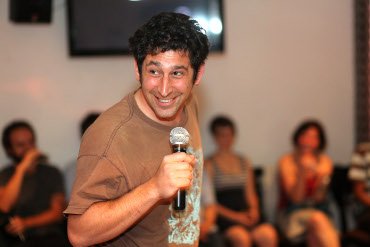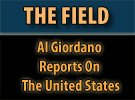


Radio: A Medium that Revolutionizes
Veteran Radio Newsman Andrew Stelzer Teaches Print, Online and Video Journalists the Basics of Audio Reporting
By Sandra Vi Sánchez
Class of 2011, School of Authentic Journalism
May 26, 2011
In the Mexican state of Morelos, more than eighty scholars and professors of the School of Authentic Journalism participated in a meeting to learn skills for radio.
 Andrew Stelzer at the 2011 School of Authentic Journalism. DR 2011 Noah Friedman-Rudovsky. |
Although millions of people today communicate through social media like Facebook and Twitter, in ample parts of the world, radio continues to be the principal means of communication for communities that do not have Internet access. For that reason, and its relatively simple technology, Stelzer said that the use of radio should not be exclusively for those who work in the medium. According to him, if you are a photographer, journalist or video producer, you can also use radio in the following ways:
Photographers can take photos that reflect the event they are covering and use two or three minutes of recordings to create audio slideshows.Print journalists can use news interviews for radio pieces to spread the story more widely. Simple language appropriate to the audience should be used.
Video producers, who are already experienced in production, can transfer their work to radio using interview audio, music and ambient sound to share what is happening.
Because people usually listen to radio while doing other activities, whether at home, in the car or at work, Stelzer—who has more than ten years of radio experience— recommended against using complicated vocabulary or large numbers. Otherwise the audience may lose the thread of the discussion or news.
Stelzer also said to avoid periods of silence when making a production and noted, “It’s important to pay attention to the sounds of places (animals, frogs, cars, etcetera) and not forget to record at least 60 seconds of room tone at the end of the interview.”
The minimum tools needed to do radio, according to Stelzer, are good headphones that block out sound, a computer, editing software and a digital audio recorder. Finally, he suggested closing your eyes and opening your ears when in the field to help capture sound and notice what may be interesting.
Anne Vigna, a professor in the investigative journalism group, added elements to take into account for writing for radio: “Remember that the news format is one minute. We should write simply with short sentences. The words should be understandable, and each sentence should be informative.” She concluded, “A news report for radio is composed of three parts: the beginning, the content, and the ending. For example, if you are doing an interview, the beginning will be the introduction to the person you are interviewing, the content will be what the person says, and the ending will be the signature with which you conclude.”
Lea Ud. el Artículo en Español
- The Fund for Authentic Journalism
For more Narco News, click here.




